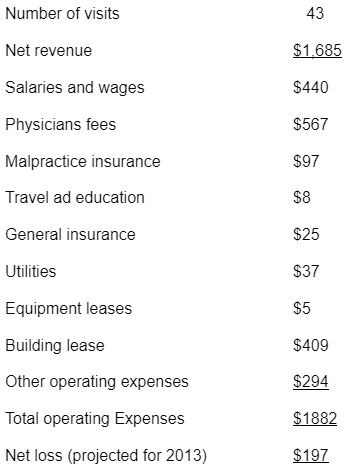Introduction
Fairbanks Memorial Hospital is a full-fledged hospital that also serves as an acute-care hospital. The institution is a for-profit organization that has an estimated 300 beds and 160 staff physicians. The hospital is one of the 75 that are owned by the Conglomerate of Health Services of America. The hospital operates a walk-in clinic that is located two miles from the main hospital. The clinic’s name is Better Care Clinic and it operates across the street from a major shopping mall.
The history of the organization indicates that it has managed to maintain profitability by providing well-appointed facilities for its clients. The hospital also boasts of a well-trained medical staff whose reputation is well-known by the organization’s customers. The quality of services that are provided by the clinic is higher than the average. The hospital is looking for ways to address the issue of primary care physicians’ shortage.
The main challenge is to convince the CEO that Better Care Clinic is a financially viable inclusion of the hospital. The analysis of the clinic’s financial position would be the one to help the CEO to make a well-informed decision on whether to close or continue operating Better Care Clinic. This is the break-even analysis of the Better Care walk-in clinic and using this analysis the hospital CEO will be able to make an informed decision.
Analysis
The initial consultations between the stakeholders revealed that there were three possible outcomes involving Better Care. These options include: closing down the clinic, continuing with current operations without the use of expansion plans, and the third option is continuing with operations and pursuing expansion goals at the same time (Gapenski, 2013). The first step in the analysis is to present a forecast of the clinic’s financial performance for the year ending 2013.
Historical Financial Data

As per the projected results for the year-end 2013, Better Care is expected to make a loss of $197. For the hospital to break even in the year 2013, the amount of revenue generated must be equal to the total operating expenses. Currently, one patient brings an average revenue of $39. Therefore, to break even the clinic needs the number of visits to be at least 49 per day. This is an addition of 6 patients from the current average of 43 patients.
Projections for 2018

The analysis indicates that theoretically, the clinic can inflate itself to profitability. However, in practical terms, this would not happen because the level at which the hospital inflates its costs would be nullified by the fact that operating expenses are also expected to rise (Pinson, 2008). For example, the cost of services such as the insurance, building lease, travel, education, salaries, and wages are all expected to go up before the year 2018. Inflating costs is only theoretically viable but when it is put into practice, it is reversed by other factors or it leads to loss of business.
The malpractice insurance charge does not have a slight significance on the clinic’s profitability. The new scheme only affects the current calculations if patients who first visit the clinic are then sent to the hospital. However, the benefit is realized by the hospital that does in-patient services but not the clinic that specializes in outpatient care.
Conclusion
Although the numbers indicate that the clinic is a financial liability to the hospital, this is not necessarily the case. First, losing the clinics would result in loss of fees through early termination of existing contracts (Baio & Dawid, 2015). However, using more funds to popularize the clinic might only lead to more expenses for the hospital. However, the hospital only requires an additional six patients per day. This deficit might already be covered by the amount of money that the main hospital earns from referrals and recommendations from Better Care Clinic.
Recommendations
The clinic is operating under unique circumstances and the decision about its future is tricky (Tsorakidis, 2011). For instance, the clinic only requires seven additional patients per day for it to break even. However, embarking on a marketing plan to add the number of daily visits is more likely to lead to a loss for the company. Therefore, it is important for both the hospital and the clinic to operate symbiotically whereby each institution markets and benefits the other directly. For example, the facilities can enlist the use of referrals involving patients and doctors. Closing down the clinic only leads to direct losses for the clinic and indirect shortcomings for the hospital.
References
Baio, G., & Dawid, A. P. (2015). Probabilistic sensitivity analysis in health economics. Statistical Methods in Medical Research, 24(6), 615-634.
Gapenski, C. (2013). Fundamental of healthcare finance (2nd ed.). Chicago, IL: Health Administration Press.
Pinson, L. (2008). Anatomy of a business plan: A step-by-step guide to building a business and securing your company’s future. Tustin, CA: Out of your Mind and Into the Marketplace.
Tsorakidis, N. (2011). Break-even analysis. New York, NY: Bookboon.